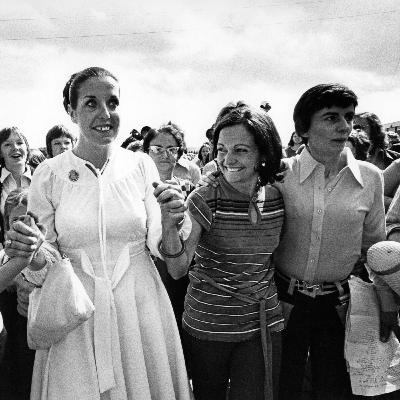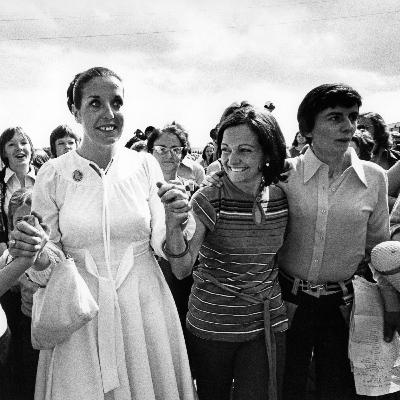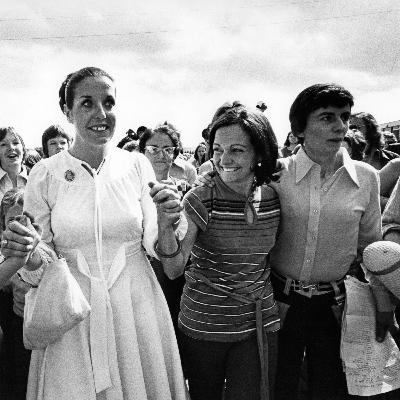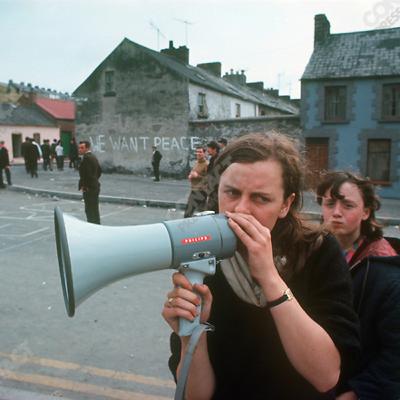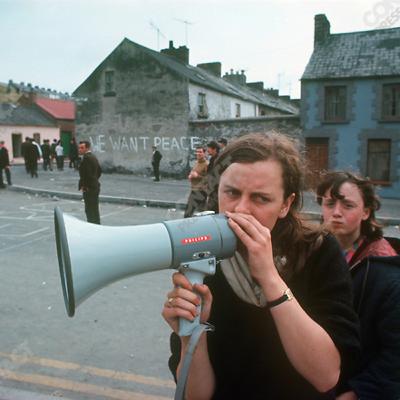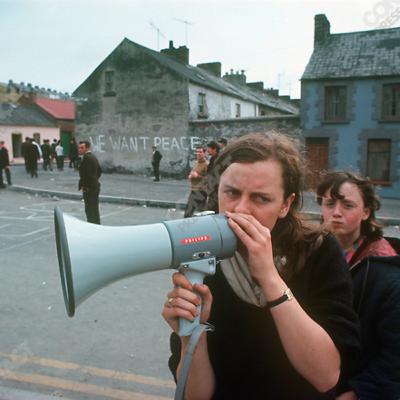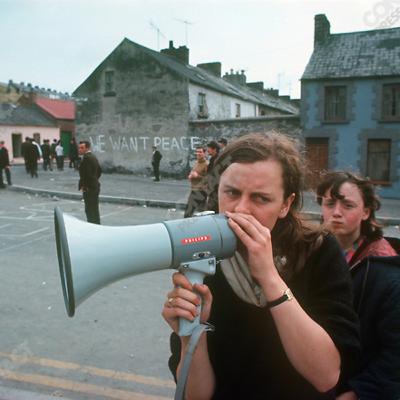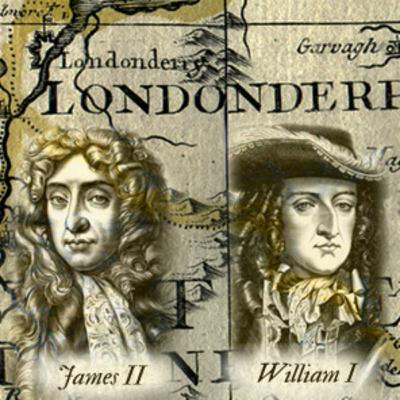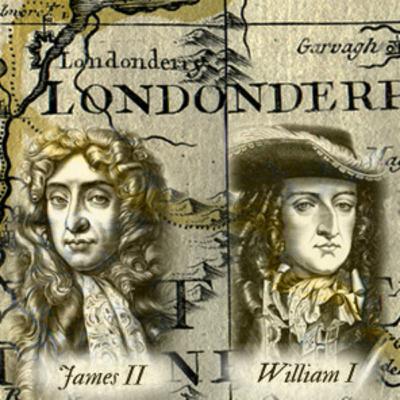Discover The Rebellions of Ulster
The Rebellions of Ulster

The Rebellions of Ulster
Author: Obscured History Productions
Subscribed: 7Played: 95Subscribe
Share
© Obscured History Productions
Description
A 7 series podcast describing in detail the Rebellions of Ulster and Northern Ireland which shaped the Country and its people. For enquiries, please contact obscuredhistoryproductions@gmail.com
56 Episodes
Reverse
The episode begins with the Derry Londonderry march and rally.This episode sets out the support for, and hostile opposition to, the Peace People movement, amid continuing heart-rending tragedies and controversy.The debacle of the Falls Road march.The legacies of those involved in the movement.
The continuing hostility of the provisional Irish Republican Army and Provisional Sinn Fein and their 'Peace With Justice' counter campaign.The obstacles the Peace People movement faced and other actors.The historic march up the Protestant Shankill Road culminating in the rally in Woodvale Park.
This mini-series covers the phenomenon of the Peace People mass movement of 1976, not the present incarnation.The backdrop of the mutual sectarian hatred and murders at this time as well as the removal of special category status.The genesis of the movement, the deaths of the Maguire children. The roles of Mairead Corrigan, Betty Williams and Ciaran McKeowan. The resulting mass rallies and marches for peace, culminating in the rally in Ormeau Park in East Belfast.
The Aftermath.
The lost generation as attitudes polarize and harden into cruelty. It is instructive that we conclude at the gates of Bloody Sunday in order to see how everything was afterwards, so starkly changed.
As the rest of Belfast is locked down safe by the creation of vigilante committees, in North and West Belfast, an eruption of sectarian violence becomes a forecast of what is soon to befall all.
The conclusion of the Battle of the Bogside via the intervention of the British Military.
The Battle of the Bogside continues. The call for help is answered within other Nationalist areas. The British Government militates towards intervention.
The Apprentice Boys' march takes place. Confrontation in Derry. The Battle of the Bogside begins.
Northern Ireland Stands on a precipice. The formation of Vigilante committees in Belfast to try to lock areas down and keep sectarianism out. The "closing time" sectarian disturbances in Belfast. The RUC directly confront Protestant disorders on the Shankhill. Northern Ireland is polarised into heightened sectarian tension on the Twelfth Night. Splits appear in the Northern Ireland Civil Rights Association over the direction of the movement and many moderates leave. With the coming of a new Prime Minister, a general amnesty is declared. The pace of reforms ramps up.
The reforms continue slowly. O'Neill resigns and is replaced by Major James Chichester-Clark. The potential ramifications are discussed within the British Cabinet.
The fallout following the Burntollet ambush and the police disorders in Derry. Disquiet within the British Government. The fiasco of the Civil Rights march in Newry results in a disaster for O'Neill. His organisation is rocked by false flag terrorist bombers - blamed on the IRA. O'Neill's ally George Forrest dies. Bernadette Devlin is elected as Unity candidate for Mid Ulster in the Westminster by-election. Her maiden speech. Further disorders in Derry. The Public Order Bill provokes fury.
The Peoples' Democracy marchers are ambushed at Burntollet. The further disorders caused by the Royal Ulster Constabulary in Derry in the wake of the march. The "Free Derry Wall" and my personal understanding of its meaning.
The fiasco at Armagh, the antics of Paisley and Major Bunting. With Northern Ireland on a precipice, Prime Minister Terrance O' Neill makes a televised "Ulster at the Crossroads" speech. Peoples' Democracy declare their intention to march - breaking the moratorium of goodwill but O'Neill, sacks Bill Craig as Minister of Home Affairs.
The domestic and international fallout in the wake of the actions of the Royal Ulster Constabulary on Duke Street.
The Prime Minister of the State of Northern Ireland is summoned to a stormy meeting with the British Prime Minister Harold Wilson and his Home Secretary James Callaghan. A programme of reform is demanded.
The Civil Rights marches continue leading to iconic scenes.
The Stormont Regime and the Struggle for Civil Rights .
The world of Northern Ireland in 1968. The Northern Ireland Civil Rights Association march on 5th October and is confronted on Duke's Street.
(Please note, if you are new to this history, you may be well advised to study the wealth of accounts by the participants. As the main events are outside my tradition and culture, I cannot guarantee that I have not missed a nuance, a personality or an emphasis. I have tried to be faithful to the truth and you are welcome to listen for this is my history too.
The coming of King William, the flight of James. The fates of the main participants in the siege. The penal laws against Catholics, the Test Act and the economic and political oppression of the Presbyterians in the wake of the victory. The babble of the pamphlets regarding Presbyterian involvement in the siege. The repeated mass migrations of the Presbyterians of Ulster to the Americas in reaction to the widespread oppression inflicted by the Protestant Ascendency of Ireland, their experiences informing Article 6 of the United States Constitution.
The siege becomes protracted. To gain time and to protect the abortive surrender, negotiations take place. The siege resumes but news comes at last from the relief fleet. Finally, the boom is broken and the Mountjoy leads the relief of the beleaguered city.
The depravations of the siege are endured and the active defence continues. Count Von Rosen orders the thousands of Protestants, both those under James' protection and those not, to be driven naked beneath the walls of the city in order to force a surrender by employing systematic barbarity.
Colonel Adam Murray initiates an aggressive defence of a now besieged Londonderry.
The relief fleet weighs anchor and leaves. Governor Lundy and his Council of War's resolution to surrender the city are frustrated by Captain (later Colonel) Adam Murray's arrival. King James is fired upon to the cry of "No Surrender" from the walls. Adam Murray once inside the city, now overwhelmed by Presbyterian refugees effects a revolution by leading the voices calling to resist. James' terms are rebuffed and the siege begins.


